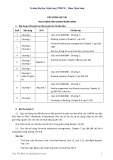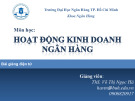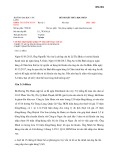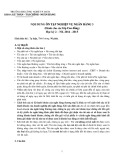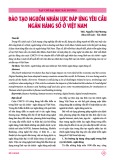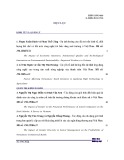
http://www.iaeme.com/IJM/index.asp 44 editor@iaeme.com
International Journal of Management (IJM)
Volume 8, Issue 5, Sep–Oct 2017, pp. 44–52, Article ID: IJM_08_05_005
Available online at
http://www.iaeme.com/ijm/issues.asp?JType=IJM&VType=8&IType=5
Journal Impact Factor (2016): 8.1920 (Calculated by GISI) www.jifactor.com
ISSN Print: 0976-6502 and ISSN Online: 0976-6510
© IAEME Publication
EMPLOYEES PERCEPTION ON
RECRUITMENT AND SELECTION PROCESS IN
PUBLIC AND PRIVATE SECTOR BANKS
S. Nava Rethna Bala Kumari
Research Scholar, Research Centre in Commerce,
Women‟s Christian College, Nagercoil, Tamilnadu, India
Dr. R. Rathiha
Associate Professor of Commerce,
Women‟s Christian College, Nagercoil, Tamilnadu, India
ABSTRACT
Recruitment is the process of having the right person, in the right place, at the
right time and it is crucial to organizational performance. You’ll find here information
on the recruitment process, recruitment law, policy and methods, online recruitment,
costs of recruitment, recruitment advertising, recruitment agencies, consultants and
executive search, graduate recruitment, competency-based recruitment, application
forms, curriculum vitae, and internal recruitment. The objective of the study is to
Analysis of employees’ perceptions as to recruitment and selection process in public
sector and private sector banks. For this purpose 250 questionnaires were filled by the
bank employees. The policy and process should be revised. The process they have
been adopting so far has been somewhat effective, to adapt to the changing times, the
process should be revised according to the results of the study.
Key words: organizational performance, Management, Information, practice and
techniques.
Cite this Article: S. Nava Rethna Bala Kumari, Dr. R. Rathiha, Employees
Perception on Recruitment and Selection Process in Public and Private Sector Banks.
International Journal of Management, 8 (5), 2017, pp. 44–52.
http://www.iaeme.com/IJM/issues.asp?JType=IJM&VType=8&IType=5
1. INTRODUCTION
Recruitment is the process of having the right person, in the right place, at the right time and it
is crucial to organizational performance. You‟ll find here information on the recruitment
process, recruitment law, policy and methods, online recruitment, costs of recruitment,
recruitment advertising, recruitment agencies, consultants and executive search, graduate
recruitment, competency-based recruitment, application forms, curriculum vitae, and internal
recruitment.







